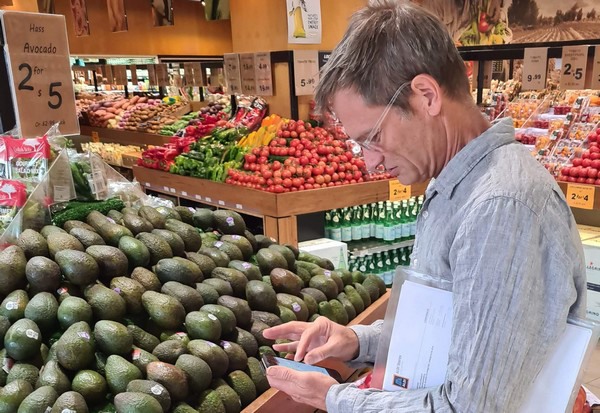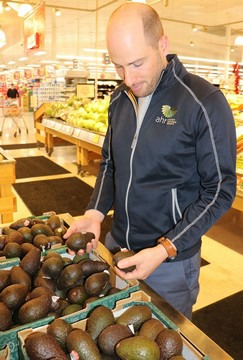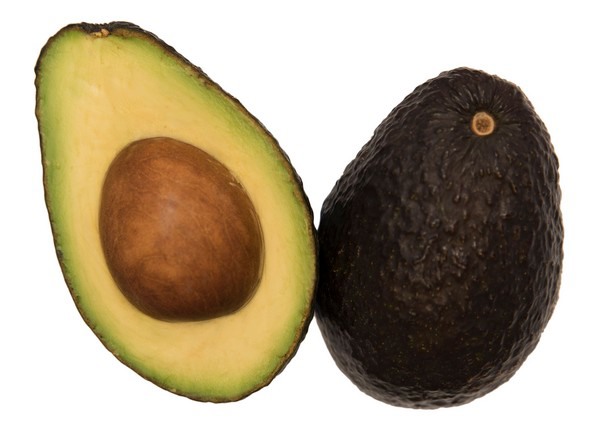A project monitoring avocado quality in retail stores across Australia has found that the industry has made improvements in meeting consumer expectations at the point of sale over the past year.
Applied Horticultural Research (AHR) started sampling fruit in May 2020 and has since sampled more than 6,000 avocados. Project leader, Adam Goldwater explains that approximately 87 per cent of Australian avocados sampled over the past year were meeting consumer expectations, of less than 10 per cent of flesh damaged. This could be in the form of bruising or flesh rot, for example.
The fruit is collected at the retail level from supermarkets, independent and specialty retailers in Sydney, Melbourne, Brisbane, Perth and Adelaide over three years. Once ripe, fruit is cut into quarters, the skin peeled off, and the damaged flesh weighed.
"The avocado industry has invested quite heavily in quality improvements over many years and they are monitoring quality to see if this investment has had any effect," he said. "Initially, from what we have seen since May 2020 there has been an improvement in quality compared to when this monitoring was done previously in 2008-2015. But we want to see whether this improvement can continue with the increasing volume of fruit that is expected to hit the market. At the same time, we are trying to provide feedback to suppliers and retailers in real-time, so within a week of assessing (the fruit samples), we get a report out to suppliers and retailers so that they can address issues as they occur.”

Mr Goldwater says one of the sticking points so far has been bruising, which has not had a significant reduction. While the project does not look at the cause of bruising, he noted that previous research has identified that customers picking up and squeezing the fruit to check ripeness is a major factor in the level of bruising of avocados.
"One thing we are looking at is the firmness of the fruit at retail and how that influences bruising," Mr Goldwater said. "We have seen that where there is more consistency in fruit stage of ripeness, where there is less variability in firmness between fruit, we tend to see less bruising. This is logical because if a consumer is presented with consistently ripe fruit they don’t have to go picking through them all to find what they are after. A key way to reducing bruising is to minimize consumer handling by making it easy for them to choose the fruit they want."
He explains that the industry benchmark of consumers accepting fruit with up to 10 per cent of internal damage was based on past research on what level avocado buyers get turned off and reduce future purchase intentions, saying that quality is going to be a significant factor in coming seasons with more volume hitting the shelves. The research showed that consumers accept that avocados are a natural product and will tolerate a small amount of damage, but Mr Goldwater noted that, of course, the industry is aiming for 100 per cent quality fruit every time.
 "I think it is going to be very important for the industry to continue to improve quality because that previous research has shown that consumers are put off in terms of repeat purchases if they have a poor experience," he said. "Good quality is going to become really important to drive sales. It can be more difficult to manage quality when you have so much fruit to sell because there is the risk of it hanging around in the supply chain a little longer. So, the attention to quality is going to be more important."
"I think it is going to be very important for the industry to continue to improve quality because that previous research has shown that consumers are put off in terms of repeat purchases if they have a poor experience," he said. "Good quality is going to become really important to drive sales. It can be more difficult to manage quality when you have so much fruit to sell because there is the risk of it hanging around in the supply chain a little longer. So, the attention to quality is going to be more important."
The Project Leader added that the three-year duration of the project is important because there can be variation, such as growing/weather conditions between the seasons, and is hopeful that the improvements in quality can continue, not just during the research but as the category grows.
"We have had excellent engagement with retailers, and we have been able to look at examples of differences in quality between stores and states, and what has been causing that," Mr Goldwater said. "The same with suppliers, we have been able to help them identify quality issues in particular batches of fruit and how that related to fruit age and ripeness at retail. Some of the suppliers have QR Codes on labels, so they can scan back and identify batches and we can look back to see where issues may have occurred. We are monitoring imported fruit as well, from New Zealand and Chile, and the point we'd like to make is that while Australian fruit is of better quality, it is not miles ahead. So, attention to quality is very important for the Australian avocado industry to stay ahead of their competitors."

Avocados Australia CEO John Tyas says the current year is a clear demonstration of the importance of quality.
“For the July 2021 to June 2022 year, we’re forecasting a production of more than 120 million kilograms, a 54 per cent increase compared to the previous year,” Mr Tyas says. “As more of the newer plantings continue to come online, there will be more Australian avocados on the market both domestically and in our growing Asian export markets. There is no market for lower quality fruit in 2021, and that’s a trend we should expect to see continue. We need to meet consumer expectations at every purchase to continue to drive demand.”
The Project has been funded by Hort Innovation using the avocado fund research and development levy and funds from the Australian Government. For more information on the fund and strategic levy investment visit: www.horticulture.com.au.
For more information on the project
Adam Goldwater
Applied Horticultural Research
Phone: +612 8627 1040
admin@ahr.com.au
www.ahr.com.au
